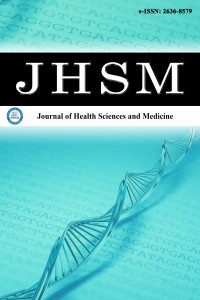1.
Trujillo-Rangel WÁ, Acuña-Vaca S, Padilla-Ponce DJ, et al. Modulation of the circadian rhythm and oxidative stress as molecular targets to improve vascular dementia: a pharmacological perspective. Int J Mol Sci. 2024;25(8):4401. doi:10.3390/ijms25084401
2.
Inouye ST, Shibata S. Neurochemical organization of circadian rhythm in the suprachiasmatic nucleus. Neurosci Res. 1994;20(2):109-130. doi: 10.1016/0168-0102(94)90029-9
3.
Nair A. Anticancer properties of melatonin and its role as an adjuvant in cancer treatment. Indian J Cancer. 2022;59(2):288-294. doi:10.4103/ijc.IJC_1197_20
4.
Budkowska M, Cecerska-Heryc E, Marcinowska Z, Siennicka A, Dolegowska B. The influence of circadian rhythm on the activity of oxidative stress enzymes. Int J Mol Sci. 2022;23(22):14275. doi:10.3390/ijms232214275
5.
Cheeseman KH, Slater TF. An introduction to free radical biochemistry. Br Med Bull. 1993;49(3):481-493. doi:10.1093/oxfordjournals.bmb.a072625
6.
Gawel S, Wardas M, Niedworok E, Wardas P. Malondialdehyde (MDA) as a lipid peroxidation marker. Wiad Lek. 2004;57(9-10):453-455.
7.
Halliwell B. Biochemistry of oxidative stress. Biochem Soc Trans. 2007; 35(Pt 5):1147-1150. doi:10.1042/BST0351147
8.
Aydin M, Dirik Y, Demir C, Tolunay HE, Demir H. Can we reduce oxidative stress with liver transplantation? J Med Biochem. 2021;40(4): 351-357. doi:10.5937/jomb0-29983
9.
Kerman M, Cirak B, Ozguner MF, et al. Does melatonin protect or treat brain damage from traumatic oxidative stress? Exp Brain Res. 2005; 163(3):406-410. doi:10.1007/s00221-005-2338-2
10.
Nishida S. Metabolic effects of melatonin on oxidative stress and diabetes mellitus. Endocrine. 2005;27(2):131-136. doi:10.1385/endo:27:2:131
11.
Shagirtha K, Muthumani M, Prabu SM. Melatonin abrogates cadmium induced oxidative stress related neurotoxicity in rats. Eur Rev Med Pharmacol Sci. 2011;15(9):1039-1050.
12.
Skaper SD, Floreani M, Ceccon M, Facci L, Giusti P. Excitotoxicity, oxidative stress, and the neuroprotective potential of melatonin. Ann NY Acad Sci. 1999;890:107-118. doi:10.1111/j.1749-6632.1999.tb07985.x
13.
Ates O, Cayli S, Gurses I, et al. Effect of pinealectomy and melatonin replacement on morphological and biochemical recovery after traumatic brain injury. Int J Dev Neurosci. 2006;24(6):357-363. doi:10.1016/j.ijdevneu. 2006.08.003
14.
Fatemi SH, Laurence JA, Araghi-Niknam M, et al. Glial fibrillary acidic protein is reduced in cerebellum of subjects with major depression, but not schizophrenia. Schizophr Res. 2004;69(2-3):317-323. doi:10.1016/j.schres.2003.08.014
15.
Ruzza P, Vitale RM, Hussain R, et al. Interactions of GFAP with ceftriaxone and phenytoin: SRCD and molecular docking and dynamic simulation. Biochim Biophys Acta. 2016;1860(10):2239-2248. doi:10.1016/ j.bbagen.2016.04.021
16.
Ozcelikay-Akyildiz G, Karadurmus L, Cetinkaya A, et al. The evaluation of clinical applications for the detection of the alzheimer’s disease biomarker GFAP. Crit Rev Anal Chem. 2024:1-12. doi:10.1080/10408347.2024.2393874
17.
Wagemann E, Schmidt-Kastner R, Block F, Sontag KH. Altered pattern of immunohistochemical staining for glial fibrillary acidic protein (GFAP) in the forebrain and cerebellum of the mutant spastic rat. J Chem Neuroanat. 1995;8(3):151-163. doi:10.1016/0891-0618(94)00042-r
18.
Baydas G, Reiter RJ, Nedzvetskii VS, Nerush PA, Kirichenko SV. Altered glial fibrillary acidic protein content and its degradation in the hippocampus, cortex and cerebellum of rats exposed to constant light: reversal by melatonin. J Pineal Res. 2002;33(3):134-139. doi:10.1034/j. 1600-079x.2002.02110.x
19.
Fauteck JD, Lerchl A, Bergmann M, et al. The adult human cerebellum is a target of the neuroendocrine system involved in the circadian timing. Neurosci Lett. 1994;179(1-2):60-64. doi:10.1016/0304-3940(94)90935-0
20.
Demir M, Altinoz E, Elbe H, et al. Effects of pinealectomy and crocin treatment on rats with isoproterenol-induced myocardial infarction. Drug Chem Toxicol. 2022;45(6):2576-2585. doi:10.1080/01480545.2021.1977025
21.
Levi F, Schibler U. Circadian rhythms: mechanisms and therapeutic implications. Ann Rev Pharmacol Toxicol. 2007;47:593-628. doi:10.1146/annurev.pharmtox.47.120505.105208
22.
Zisapel N. New perspectives on the role of melatonin in human sleep, circadian rhythms and their regulation. Br J Pharmacol. 2018;175(16): 3190-3199. doi:10.1111/bph.14116
23.
Khullar A. The role of melatonin in the circadian rhythm sleep-wake cycle: a review of endogenous and exogenous melatonin. Psychiatric Times. 2012;29(7):26-32.
24.
Hardeland R. Melatonin metabolism in the central nervous system. Curr Neuropharmacol. 2010;8(3):168-181. doi:10.2174/157015910792246244
25.
Nian J, Lan W, Wang Z, Zhang X, Yao H, Zhang F. Exploring the metabolic implications of blue light exposure during daytime in rats. Ecotoxicol Environ Saf. 2024;278:116436. doi:10.1016/j.ecoenv.2024.116436
26.
McElroy CL, Wang B, Zhang H, Jin K. Cerebellum and aging: update and challenges. Aging Dis. 2024;15(6):2345-2360. doi:10.14336/AD.2024. 0220
27.
Castro-Pascual IC, Ferramola ML, Altamirano FG, et al. Circadian organization of clock factors, antioxidant defenses, and cognitive genes expression, is lost in the cerebellum of aged rats. Possible targets of therapeutic strategies for the treatment of age-related cerebellar disorders. Brain Res. 2024;1845:149195. doi:10.1016/j.brainres.2024.149195
28.
Cho JH, Bhutani S, Kim CH, Irwin MR. Anti-inflammatory effects of melatonin: a systematic review and meta-analysis of clinical trials. Brain Behav Immun. 2021;93:245-253. doi:10.1016/j.bbi.2021.01.034
29.
Abdelhameed NG, Ahmed YH, Yasin NAE, Mahmoud MY, El-Sakhawy MA. Effects of aluminum oxide nanoparticles in the cerebrum, hippocampus, and cerebellum of male wistar rats and potential ameliorative role of melatonin. ACS Chem Neurosci. 2023;14(3):359-369. doi:10.1021/acschemneuro.2c00406
30.
Galano A, Reiter RJ. Melatonin and its metabolites vs oxidative stress: From individual actions to collective protection. J Pineal Res. 2018;65(1): e12514. doi:10.1111/jpi.12514
31.
Kaptanoglu E, Palaoglu S, Demirpence E, Akbiyik F, Solaroglu I, Kilinc A. Different responsiveness of central nervous system tissues to oxidative conditions and to the antioxidant effect of melatonin. J Pineal Res. 2003;34(1):32-35. doi:10.1034/j.1600-079x.2003.02934.x
32.
Essawy AE, Mohamed AI, Ali RG, Ali AM, Abdou HM. Analysis of melatonin-modulating effects against tartrazine-induced neurotoxicity in male rats: biochemical, pathological and immunohistochemical markers. Neurochem Res. 2023;48(1):131-141. doi:10.1007/s11064-022-03723-9
33.
McClean C, Davison GW. Circadian clocks, redox homeostasis, and exercise: time to connect the dots? Antioxidants (Basel). 2022;11(2):256. doi:10.3390/antiox11020256
34.
Kisaoglu A, Borekci B, Yapca OE, Bilen H, Suleyman H. Tissue damage and oxidant/antioxidant balance. Eurasian J Med. 2013;45(1):47-49. doi: 10.5152/eajm.2013.08
35.
Ramos-Martínez E, Almeida-Aguirre EKP, Ramos-Martínez I, et al. Neuroprotection mediated by prolactin against streptozotocin injury in brain rat areas. Brain Res. 2024;1842:149104. doi:10.1016/j.brainres.2024. 149104
36.
Kılıçoğlu M, Düz U, Arslan G, Ayyıldız M, Ağar E, Kılıç N. The effects of leptin and cannabinoid CB1 receptor agonist/antagonist in cerebral tissues of epileptic rats. Rev Assoc Med Bras (1992). 2024;70(5):e20231333. doi:10.1590/1806-9282.20231333
37.
Su J, Song Y, Zhu Z, et al. Cell-cell communication: new insights and clinical implications. Signal Transduct Target Ther. 2024;9(1):196. doi:10. 1038/s41392-024-01888-z
38.
Aulinas A. Physiology of the pineal gland and melatonin. In: Feingold KR, Anawalt B, Boyce A, Chrousos G, de Herder WW, Dhatariya K, et al, editors. Endotext (Internet). South Dartmouth (MA): MDText.com, Inc.; 2000.
39.
Cho JH, Tae HJ, Kim IS, et al. Melatonin alleviates asphyxial cardiac arrest-induced cerebellar Purkinje cell death by attenuation of oxidative stress. Exp Neurol. 2019;320:112983. doi:10.1016/j.expneurol.2019.112983
40.
Rasband MN. Glial contributions to neural function and disease. Mol Cell Proteomics. 2016;15(2):355-361. doi:10.1074/mcp.R115.053744
41.
Carrier M, Dolhan K, Bobotis BC, Desjardins M, Tremblay MÈ. The implication of a diversity of non-neuronal cells in disorders affecting brain networks. Front Cell Neurosci. 2022;16:1015556. doi:10.3389/fncel. 2022.1015556
42.
Verkhratsky A, Nedergaard M. Physiology of astroglia. Physiol Rev. 2018;98(1):239-389. doi:10.1152/physrev.00042.2016
43.
Potokar M, Morita M, Wiche G, Jorgacevski J. The diversity of intermediate filaments in astrocytes. Cells. 2020;9(7):1604. doi:10.3390/cells9071604
44.
Jurga AM, Paleczna M, Kadluczka J, Kuter KZ. Beyond the GFAP-astrocyte protein markers in the brain. Biomolecules. 2021;11(9):1361. doi:10.3390/biom11091361
45.
Korzhevskii D, Otellin V, Grigor’ev I. Glial fibrillary acidic protein in astrocytes of the human neocortex. Morfologiia (Saint Petersburg, Russia). 2004;126(5):7-10.
46.
Brenner M, Messing A. Regulation of GFAP expression. ASN Neuro. 2021;13:1759091420981206. doi:10.1177/1759091420981206
47.
Morgan TE, Rozovsky I, Goldsmith SK, Stone DJ, Yoshida T, Finch CE. Increased transcription of the astrocyte gene GFAP during middle-age is attenuated by food restriction: implications for the role of oxidative stress. Free Radic Biol Med. 1997;23(3):524-528. doi:10.1016/s0891-5849 (97)00120-2
48.
Benítez-King G. Melatonin as a cytoskeletal modulator: implications for cell physiology and disease. J Pineal Res. 2006;40(1):1-9. doi:10.1111/j. 1600-079X.2005.00282.x
49.
Tsutsui K, Haraguchi S. Biosynthesis and biological action of pineal allopregnanolone. Front Cell Neurosci. 2014;8:118. doi:10.3389/fncel. 2014.00118
50.
Haraguchi S, Hara S, Ubuka T, Mita M, Tsutsui K. Possible role of pineal allopregnanolone in Purkinje cell survival. Proc Natl Acad Sci USA. 2012;109(51):21110-21115. doi:10.1073/pnas.1210804109

